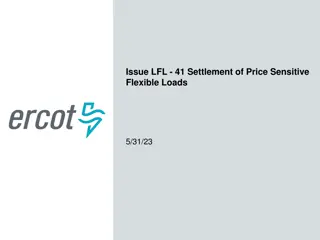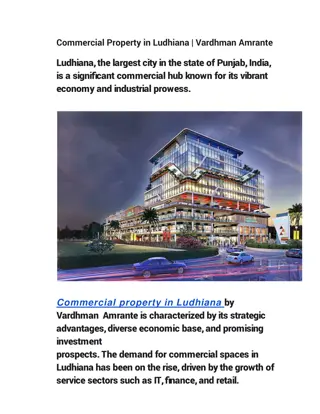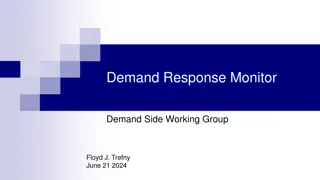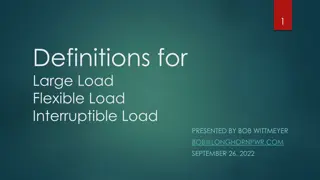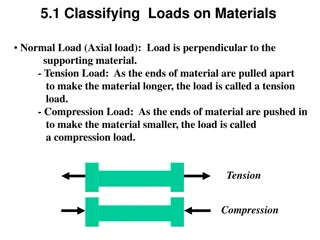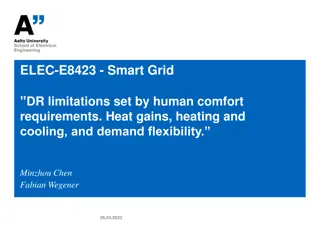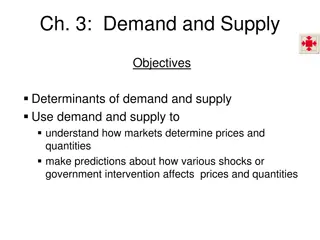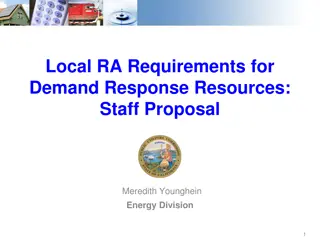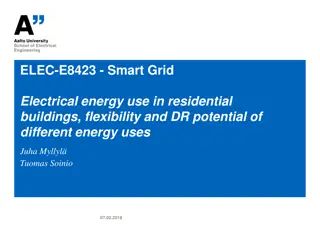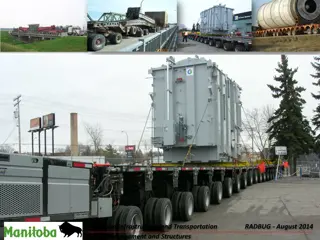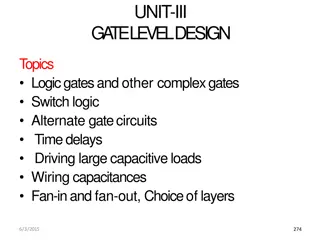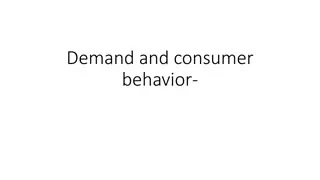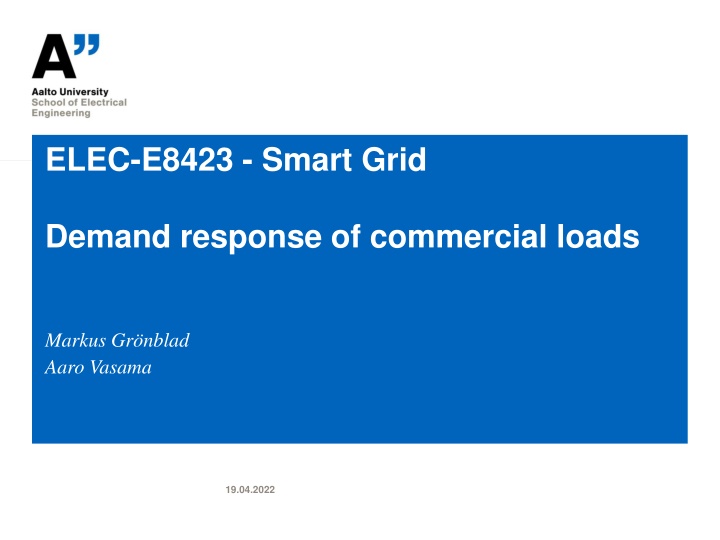
Smart Grid Demand Response in Commercial Buildings Presentation
Explore the possibilities of demand response in commercial buildings to address the challenges posed by variable renewable electricity generation. Learn about demand response management, integration of human behavior, different loads in commercial buildings, sources of demand response, and real-world case studies like Vibeco & LIDL. Discover future developments in the field.
Download Presentation

Please find below an Image/Link to download the presentation.
The content on the website is provided AS IS for your information and personal use only. It may not be sold, licensed, or shared on other websites without obtaining consent from the author. If you encounter any issues during the download, it is possible that the publisher has removed the file from their server.
You are allowed to download the files provided on this website for personal or commercial use, subject to the condition that they are used lawfully. All files are the property of their respective owners.
The content on the website is provided AS IS for your information and personal use only. It may not be sold, licensed, or shared on other websites without obtaining consent from the author.
E N D
Presentation Transcript
ELEC-E8423 - Smart Grid Demand response of commercial loads Markus Gr nblad Aaro Vasama 19.04.2022
Introduction In this presentation we are going to talk about what are the possibilities of demand response (DR) in commercial buildings. Other point that we are going to talk about is that, how this demand response is technically possible and what are the limitations for it. Main problem that the DR is trying to address is the growth of variable renewable electricity generation that causes increasing uncertainty in the power grid balance 19.04.2022 07.02.2018 Page 2
Demand response management Adjustment of electricity consumption due to external signals Why would you want to take part in this? Grid need based Price based Adjust loads based on grid Adjust loads based on frequency electricity prices Monetary compensation from TSO Cost savings Contractual Voluntary 19.04.2022 07.02.2018 Page 3
Commercial buildings Shops, malls, restaurants, offices, sports halls Uniform load curve dictated by human behavior Human behavior is also a limiting factor for DR Biggest problem is how to integrate human needs while still getting enough demand response capacity 19.04.2022 07.02.2018 Page 4
Loads in commercial buildings HVAC Lighting Others EV charging Other 25% IT systems HVAC 50% Kitchens Lighting 25% User mobility The shares differ significantly depending on climate and building use 19.04.2022 07.02.2018 Page 5
Sources of DR in commercial buildings Changes need to be applied with the user experience in mind! Magnitude of change Rate of change 19.04.2022 07.02.2018 Page 6
CASE: Vibeco & LIDL Aggregation of 136 Lidl stores around Finland Changes in electricity consumption are implemented by regulating ventilation and water-cooling machines. The changes are momentary and do not interfere with conditions in stores. 19.04.2022 07.02.2018 Page 7
Future developments Aggregation of multiple small commercial loads, like in previous example Adoption of EV charging in the DR system Building automation and IoT will bring new possibilities in regard of virtual power plants Including novel solutions such as ships into the demand response network Lots of new startups in this space! 19.04.2022 07.02.2018 Page 8
Conclusions Demand response management will play a key role in stabilizing our grid as the generation fluctuation increases User experience is a limiting factor when implementing DR especially in the case of buildings There is huge potential for DR in commercial loads, but these small loads need to be aggregated in order to have a considerable grid balancing difference 19.04.2022 07.02.2018 Page 9
Source material used Watson, D., Kiliccote, S., Motegi, N. & Mary Ann Piette, M. A. (2006) Strategies for Demand Response in Commercial Buildings [Online]. Available at: https://www.aceee.org/files/proceedings/2006/data/papers/SS06_Panel3_Paper25.pdf (Accessed 3.4.2022) Julin, V. (2019) Demand response on commercial buildings [Online]. Available at: https://aaltodoc.aalto.fi/handle/123456789/37112 (Accessed 3.4.2022) Charoen, P., Kitbutrawat, N. & Kudtongngam, J. (2022) A Demand Response Implementation with Building Energy Management System [Online]. Available at: https://www.mdpi.com/1996-1073/15/3/1220/htm Khorram, M., Abrishambaf, O., Faria, P. & Vale, Z. (2018) Office building participation in demand response programs supported by intelligent lighting management [Online]. Available at: https://energyinformatics.springeropen.com/articles/10.1186/s42162-018-0008-4 Introduction to Commercial Building Control Strategies and Techniques for Demand Response Available at: https://eta- publications.lbl.gov/sites/default/files/59975.pdf Vibeco (2022). Lidl s 136 stores in Finland will be connected to the virtual power plant service. Available at: https://vibeco.fi/en/references/lidl-suomi/ (Accessed 14.4.2022) Jin et al. (2019). ESS Optimal Scheduling considering Demand Response For commercial Buildings. Available: https://doi.org/10.1109/IYCE45807.2019.8991566. (Accessed 4.4.2022) Khorram, M. et al. (2018). Office building participation in demand response programs supported by intelligent lighting management [Online]. Available at: https://doi.org/10.1186/s42162-018-0008-4. (Accessed 13.4.2022) 19.04.2022 07.02.2018 Page 10


